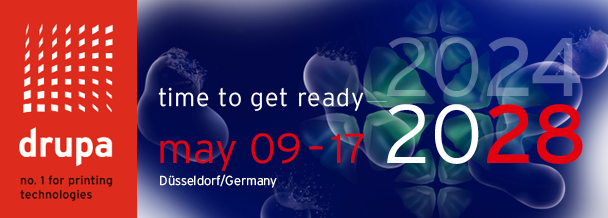Will online design tools and AI soon turn everyone into a designer?

Online design tools combined with generative AI are revolutionising the printing industry. They are making the design process easier, more accessible and more creative - even for people with no previous experience. But what are the limits of this technology? AI can do a lot, but true creativity, emotion and brand understanding remain human strengths. A look at the opportunities, challenges and future of digital transformation.
The democratisation of design through online tools
Online design tools now make it possible for non-experts to create appealing designs without in-depth knowledge or expensive software. Platforms such as Printbox or Printess are just two examples that offer intuitive user interfaces, ready-made templates and a large image and media library. This opens up completely new possibilities, especially in the web-to-print sector: Customers can personalise their products and send them straight to print.
Benefits for businesses and end users:
- Easy to use: Easy-to-use interfaces get you up and running quickly.
- Creative freedom: Numerous templates and customisation options encourage individual design.
- Direct implementation: From design to print - no detours or manual processing.
But is this enough to replace professional designers? This is where artificial intelligence comes in.
How generative AI is changing the design process:
Generative AI is revolutionising the way designs are created. Using machine learning, AI analyses existing patterns, colours and layouts and automatically suggests new designs. It can customise elements and even generate complete designs at the touch of a button.
Three key benefits of AI in the design process
- Automated suggestions: AI generates customised designs based on user preferences.
- Creative support: AI provides inspiration through alternative layouts and colour palettes.
- Print data optimisation: Intelligent analysis improves the quality and printability of designs.
Will designers soon be obsolete?
Despite the enormous progress made, the human factor remains indispensable. Creativity, emotional intelligence and strategic thinking are aspects that AI can only imitate to a limited extent. While AI can help speed up processes and generate new ideas, a sense of brand identity, trends and emotional appeal remains a human advantage.
While AI can deliver impressive results, it has clear limitations: it cannot create visions, deliver deep emotional impact or intuitively sense cultural trends. AI can assist, but creative vision, brand feeling and emotional connections still need to be created by humans.
Humans vs: AI - Where are the strengths?
Creativity:
Designers use their intuition, emotions and personal experiences to create unique and innovative designs. They can break existing rules, make unusual connections and develop new visual languages. AI, on the other hand, is based on analysing patterns and data from the past. It can combine or optimise existing styles, but cannot create truly original concepts.
Trends & culture:
Designers have a deep understanding of cultural trends, social developments and the subtle nuances of visual communication. They understand not only what is popular, but also why a trend is emerging and how it might evolve. AI, on the other hand, can recognise patterns in existing data and make predictions, but it lacks the contextual knowledge and ability to interpret cultural meanings or set new trends itself.
Emotional impact:
The ability to evoke emotion through design is one of the greatest strengths of designers. Through storytelling, psychological mechanisms and finely tuned aesthetics, they can create a deeper connection with the viewer. While AI can use statistical models to predict which designs might achieve a certain effect, it lacks the intuitive feel for emotional depth, subtext and design subtleties.
Efficiency:
While human designers need time for creative processes, research and detailed work, AI is characterised by high speed and automation. It can generate large numbers of design variants, perform repetitive tasks and streamline workflow. This allows designers to focus more on conceptual and creative work rather than time-consuming routine tasks.
AI is a powerful tool, but it is not a replacement for humans. Rather, it enables designers to work more efficiently and creatively by freeing them from tedious tasks and opening up new sources of inspiration. The future is not in either/or, but in intelligent collaboration between humans and machines.
Looking to the future: Human & machine as a dream team?
The future does not lie in the question 'human or machine', but in intelligent collaboration that leverages the strengths of both. Online design tools and AI are helping to streamline creative processes, open up new market opportunities and democratise access to professional design. But human expertise remains essential to create innovative, emotional and brand-appropriate designs.
Print service providers that embrace these technologies will increase efficiency, create new revenue streams and improve customer satisfaction. The combination of AI and human creativity will shape the next stage of the industry's evolution.
